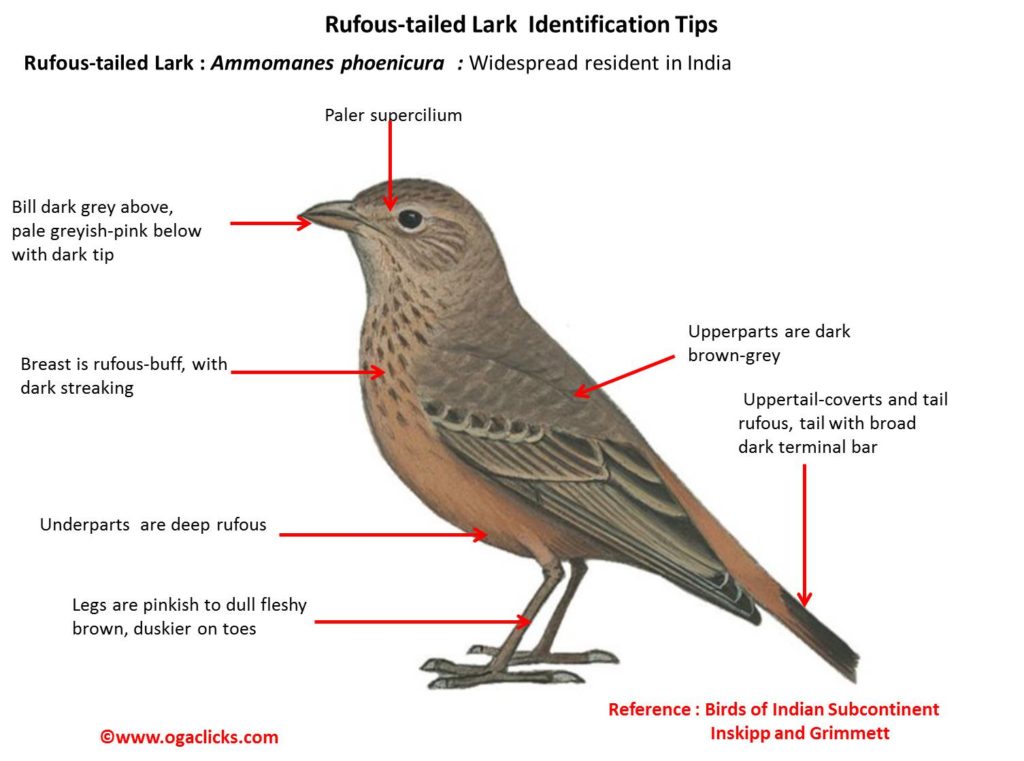
Rufous-tailed Lark Ammomanes phoenicura
Etymology:
- Ammomanes : Greek word ammos – sand; manes- passionately fond of
- Phoenicura: Greek word phoenix – crimson, red ; ouros –tailed ( Red-tailed}
Vernacular Names: Hindi: Aggia, Katthai-dum Deoli, Retal, Pun: Lal punjha chandol, Ben: Lal bharat, Guj: Khetariyo, Te: Ambali jori gadu, Dowa pitta, Mal: Chembuvalan vanambadi, Mar: Tambus Shepaticha Chandol
Distribution in India: Widespread resident in India
Description: Size of 15-16 cm. It is a robust and quite strong-billed, fairly dark and featureless lark. The adult is plain dark brown-grey above, faint paler supercilium; wings dark grey-brown with indistinct paler edges. The uppertail-coverts and tail are rufous, the tail has broad dark terminal bar; throat and upper breast rufous-buff, rest of underparts are rufous. There is dark streaking on breast, underwing mostly deep rufous; iris dark brown; bill mainly dark grey above, pale greyish-pink below with dark tip; legs pinkish to dull fleshy brown, often duskier on toes. Both the sexes are similar, female on average smaller than male.
Habitat: It is found in dry, open habitats with sparse vegetation.
Food habits :It eats seeds of grasses and cereals, and invertebrates like beetles. It forages on ground.
Breeding habits: They breed in Feb–May in India. The mating display by male includes a song flight of brief duration, at low level, undulating on horizontal in its flight path. The nest is built by both sexes. The nest is a depression on ground, generally sheltered by clod of earth, tuft of grass or other plant, lined with fine grass and often surrounded by pebbles, small sticks. They lay a clutch of 2–4 eggs; incubation by female alone, but both sexes feed the young.